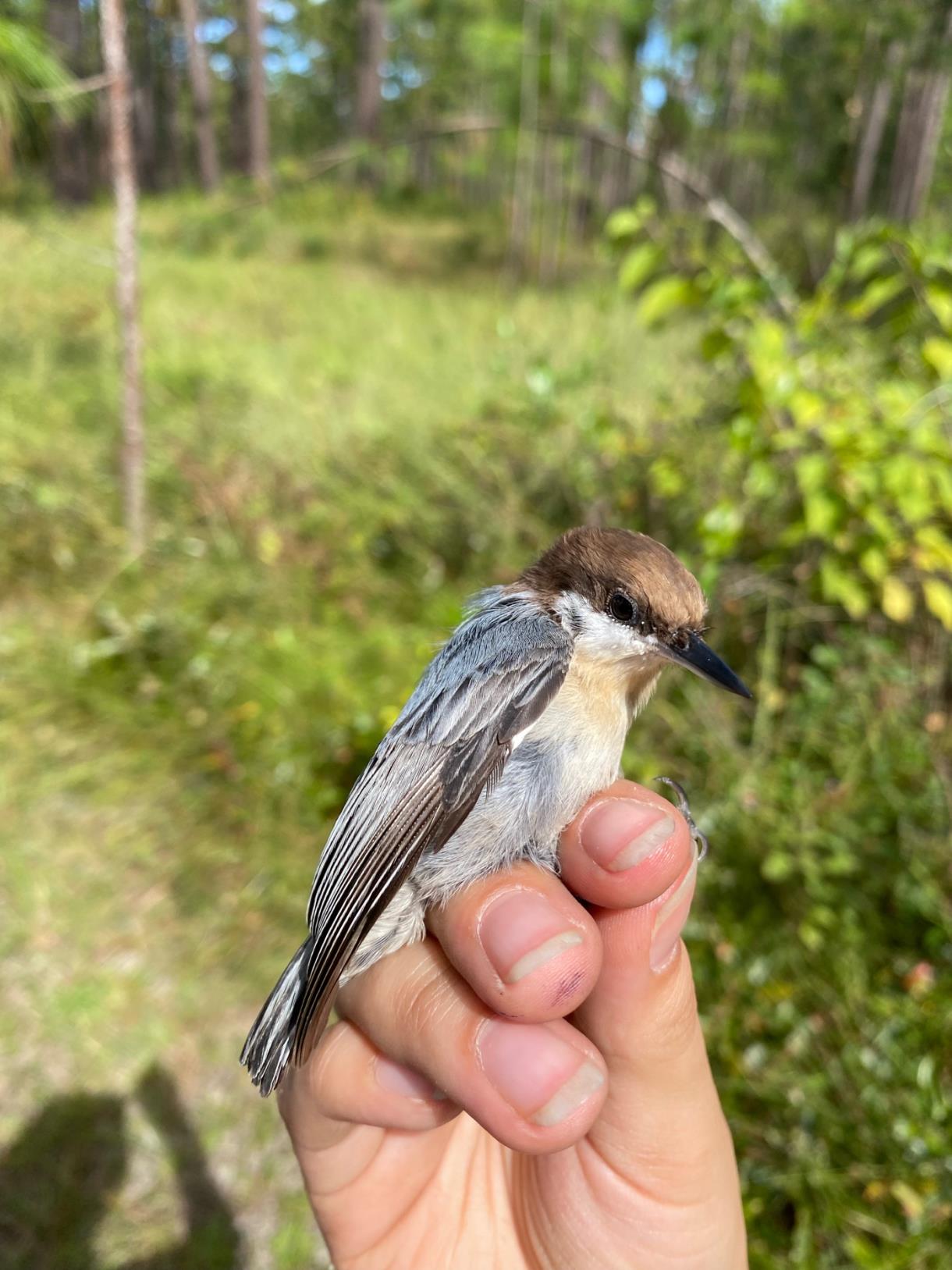President's Showcase
Traysea Malama-Auger
Supervising Professor: Dr. Emily DuVal
Traysea Malama-Auger is a senior majoring in Biology. Her research interests are firmly centered in behavioral ecology with an ornithological focus, and her ideal career would be to work as an ornithologist through a university or research station. It is Traysea’s personal goal to give back to her family and community in Hawaii by working as an ornithologist on the ‘āina. In her free time she loves to bird with friends, draw, and read.
Abstract
Social animals coordinate behavior with conspecifics through communication. Avian vocalizations between mated pairs could potentially reveal important indicators of fitness, such as territoriality and reproductivity. Given the importance of communication between members of the same species, the mechanisms through which communication occurs could influence social interactions and are therefore likely to have evolved via natural selection. An avian duet can loosely be defined as a joint acoustic display in which two birds coordinate their song with a degree of temporal arrangement (Farabaugh 1982). Duetting in avian species is incredibly diverse, with both the form and the members involved varying per species. My research project investigates whether the coordinated vocalizations elicited from brown-headed nuthatch (Sitta pusilla) pairs are duets. I will test three characteristics of a duet; whether paired songs overlap more often than by chance, if the paired song has a defined structure that repeats over time, and if there is a noticeable and predictable time lapse which would indicate that the pair is coordinating the timing of their songs. If evidence for duetting exists, then a second set of hypotheses would address whether brown-headed nuthatches are recognizing and memorizing the duet codes of a neighboring family group, in comparison to “stranger” or a random floater male.
Presentation Materials



